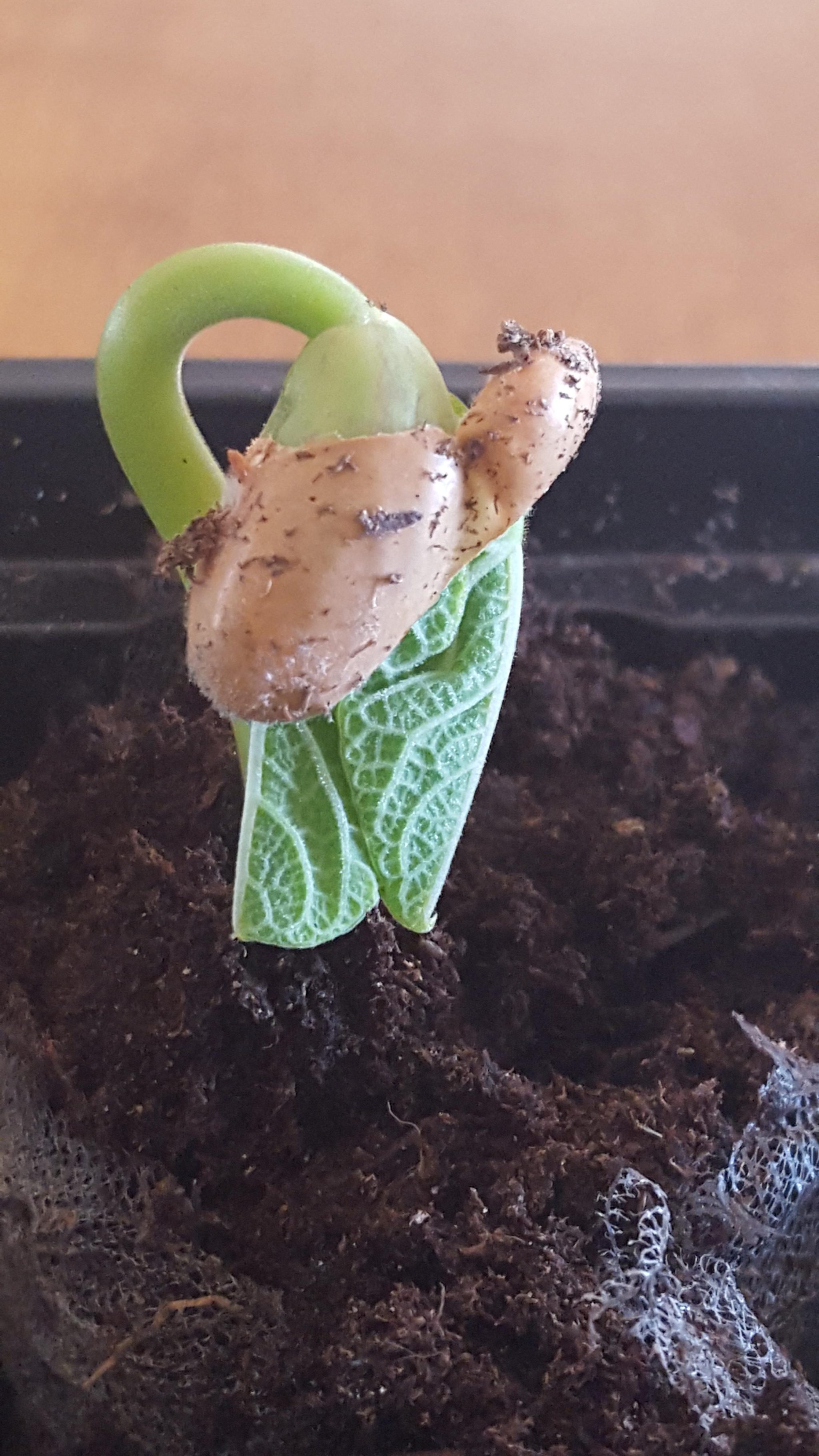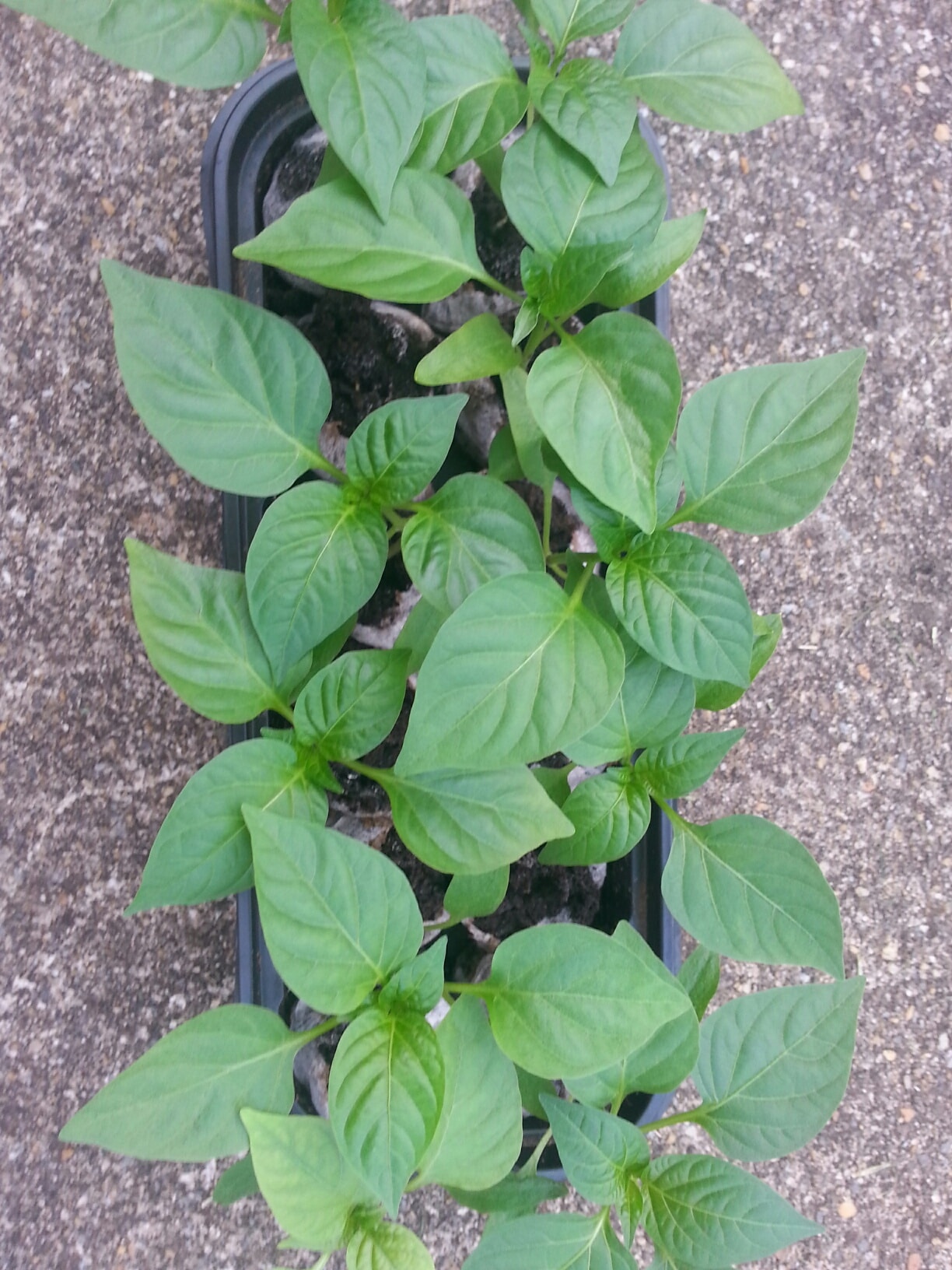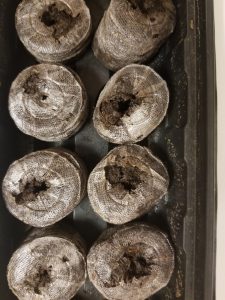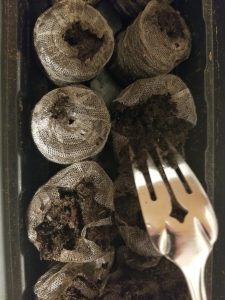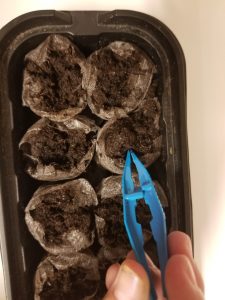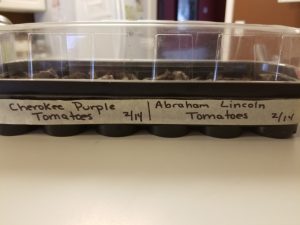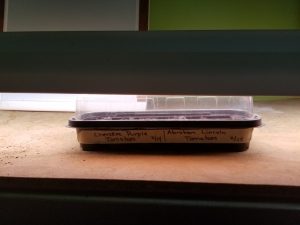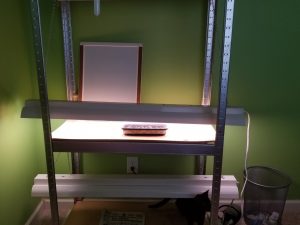Now that your seeds have germinated the fun begins! When most of the seedlings have germinated and look strong, think about removing the top dome. You can do this gradually by placing it askew on the seed tray for a day or two before totally removing the top.
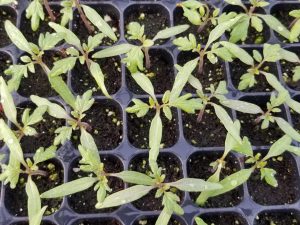
It is important to keep the light just above the seedlings and to move it as the seedlings grow. If the light is too far from the seedling, the seedling will become “leggy” as it grows towards the light.
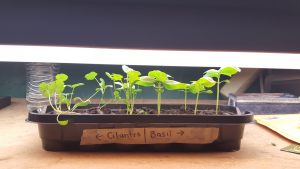
At this stage the seedlings are very fragile. When you need to add water, add it between the pellets. The flow of water can actually displace the seedling and/or damage the stem. Also watering from the bottom will help your roots grow longer. You want to avoid diseases such as damping off, so let the seedlings dry out before re-watering.
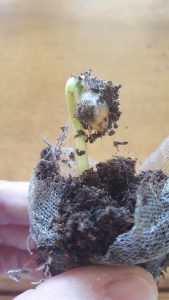
As the seedlings put on a few true leaves, they will outgrow the pellet and will need to be repotted in a larger pot with soil. After repotting you can keep them under the lights until the weather cooperates for transplanting in the garden.
As the seedlings get closer to that point, run your hand across the plants moving the stems slightly. The goal is to toughen the stems a bit so that they will be able to handle wind outdoors.
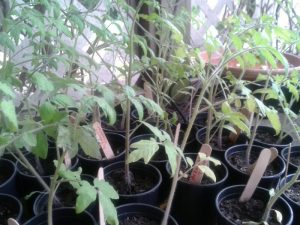
When the weather is ready for transplanting you will need to harden off the transplants. If you take plants that have been living in a cozy, protected environment and move them into a place with full sun and wind they will suffer. You can avoid this by moving them out slowly. The first few days place them outside in the shade just for the day. Next, put them outside in the shade for the day and night. Then move them into full sun for a few hours. Finally, they are ready to be put in the ground. This type of hardening-off is the ideal way. You may not have all the time for all of these stages, but do the best you can. Your plants will reward you!
Happy Gardening!
